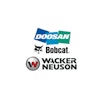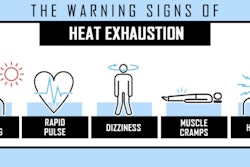
United Rentals, Inc. announced financial results for the third quarter of 2019.
Total revenue increased 17.6% to $2.488 billion and rental revenue increased 15.4% to $2.147 billion. On a GAAP basis, the company reported third quarter net income of $391 million, or $5.08 per diluted share ("EPS"), compared with $333 million, or $4.01 per diluted share, for the same period in 2018. Diluted EPS for the quarter increased 26.7% year-over-year. Adjusted EPS for the quarter increased 25.7% year-over-year to $5.96.
Adjusted EBITDA increased 14.0% year-over-year to $1.207 billion, while adjusted EBITDA margin decreased 150 basis points to 48.5%. On a pro forma basis, year-over-year, net income increased 42.7%, adjusted EBITDA increased 4.4% and adjusted EBITDA margin decreased 40 basis points.
Matthew Flannery, chief executive officer of United Rentals, said, “In the third quarter, we delivered solid revenue growth driven primarily by strength across our core construction markets, partially offset by slower industrial growth. Operating costs were higher than expected as we repaired and repositioned fleet. Our updated guidance reflects these dynamics, as well as our expectation for higher free cash flow generation.”
Flannery continued, “Looking ahead, our customers remain upbeat about their business prospects well into next year. At the same time, we know that lingering economic uncertainty could impact construction and industrial activity. As we complete our planning for 2020, we’re focused on delivering returns in any operating environment, while balancing growth, margins and free cash flow.”
Highlights
- Rental Revenue: Rental revenue was a third quarter record at $2.147 billion, reflecting increases of 15.4% and 4.2% year-over-year on an as-reported and pro forma basis, respectively. The as-reported increase is primarily due to the impact of the BakerCorp and BlueLine acquisitions. The pro forma increase is primarily due to growth in the company’s construction end-markets.
Rental revenue includes owned equipment rental revenue, re-rent revenue and ancillary revenue.
- Fleet Productivity: Third quarter fleet productivity decreased 1.3% year-over-year, primarily due to the impact of the BakerCorp and BlueLine acquisitions. On a pro forma basis, fleet productivity increased 1.7%, reflecting improvements in rental rates and fleet mix, partially offset by lower time utilization.
- Used Equipment: The company generated $198 million of proceeds from used equipment sales in the third quarter at a GAAP gross margin of 38.4% and an adjusted gross margin of 46.0%; this compares with $140 million at a GAAP gross margin of 40.7% and an adjusted gross margin of 50.0% for the same period last year. The year-over-year decrease in adjusted gross margin was primarily due to changes in the mix of equipment sold and channel mix.
- Profitability: Net income for the third quarter increased 17.4% year-over-year to $391 million. Net interest expense increased $29 million year-over-year primarily due to debt issued to fund the BakerCorp and BlueLine acquisitions and the effective tax rate decreased 430 basis points year-over-year primarily due to the release of foreign tax credit valuation allowances. Operating income increased 13.5% year-over-year to $656 million. Adjusted EBITDA increased 14.0% year-over-year to $1.207 billion, while adjusted EBITDA margin decreased 150 basis points to 48.5%. The decline in adjusted EBITDA margin primarily reflects the acquisitions of BakerCorp and BlueLine. On a pro forma basis, year-over-year, net income increased 42.7%, adjusted EBITDA increased 4.4% and adjusted EBITDA margin decreased 40 basis points, reflecting the absorption of higher operating costs primarily related to repairs and maintenance and delivery, including the costs of transferring equipment between our facilities.
- General rentals: Third quarter rental revenue for the company’s general rentals segment increased by 13.7% and 1.6% year-over-year on an actual and pro forma basis, respectively. Rental gross margin decreased by 270 basis points to 40.9%, due primarily to the impact of acquisitions and increased operating costs. Depreciation of rental equipment increased 19.6%, due largely to the acquisition of BlueLine. Operating costs were impacted by repair and repositioning initiatives that resulted in increased repairs and maintenance and delivery expenses, which increased 27.0% and 19.6%, respectively.
- Specialty: Third quarter rental revenue for the company’s specialty segment, Trench, Power and Fluid Solutions, increased by 21.1% year-over-year, including an organic increase of 10.3%. Rental gross margin decreased by 360 basis points to 48.7%, primarily due to the impact of acquisitions, and, to a lesser extent, higher than anticipated operating costs including repairs and maintenance.
- Cash flow: For the first nine months of 2019, net cash from operating activities increased 21.6% to $2.582 billion and free cash flow6, including aggregated merger and restructuring payments, increased 101.9% to $1.082 billion. The increase in free cash flow was primarily due to higher net cash from operating activities and included rental gross capital expenditures of $1.974 billion, which was flat year-over-year.
- Capital Allocation: In June 2019, the company announced that it had lowered its targeted leverage range to 2.0x-3.0x, from 2.5x-3.5x, and expects to end the year with a net leverage ratio of 2.6x compared to 2.7x at September 30, 2019 and 3.1x at December 31, 2018. Year to date, the company has repurchased $630 million of common stock under its current $1.25 billion repurchase program, reducing its diluted share count by 3.1%. As of September 30, 2019, the company has repurchased $1.050 billion of common stock under this program, which it expects to complete by year-end.
Return on Invested Capital (ROIC)
ROIC was 10.7% for the 12 months ended September 30, 2019, which was flat with the 12 months ended September 30, 2018 and exceeded the company’s current weighted average cost of capital of less than 8.0%. The company’s ROIC metric uses after-tax operating income for the trailing 12 months divided by average stockholders’ equity, debt and deferred taxes, net of average cash. To mitigate the volatility related to fluctuations in the company’s tax rate from period to period, the U.S. federal corporate statutory tax rates of 21% for 2019 and 2018 and 35% for 2017 were used to calculate after-tax operating income (because of the trailing 12-month measurement period, the 2017 tax rate impacts ROIC for the 12 months ended September 30, 2018).
ROIC materially increased due to the reduced tax rates following the enactment of the Tax Cuts and Jobs Act of 2017 (the "Tax Act"). The Tax Act decreased the U.S. federal tax rate from 35% to 21%. If the 21% U.S. federal corporate statutory tax rate following the enactment of the Tax Act was applied to ROIC for all historic periods, the company estimates that ROIC would have been 10.6% and 11.0% for the 12 months ended September 30, 2019 and 2018, respectively.
Fleet Productivity Operating Metric
In January 2019, the company introduced fleet productivity as a comprehensive metric that provides greater insight into the decisions made by its managers in support of growth and returns. Specifically, the company seeks to optimize the interplay of rental rates, time utilization and mix in driving rental revenue. Fleet productivity aggregates, in one metric, the impact of changes in rates, utilization and mix on owned equipment rental revenue.
The company believes that this metric is useful in assessing the effectiveness of its decisions on rates, time utilization and mix, particularly as they support the creation of shareholder value. Additional information about fleet productivity can be found in the Third Quarter 2019 Investor Presentation on unitedrentals.com.




















